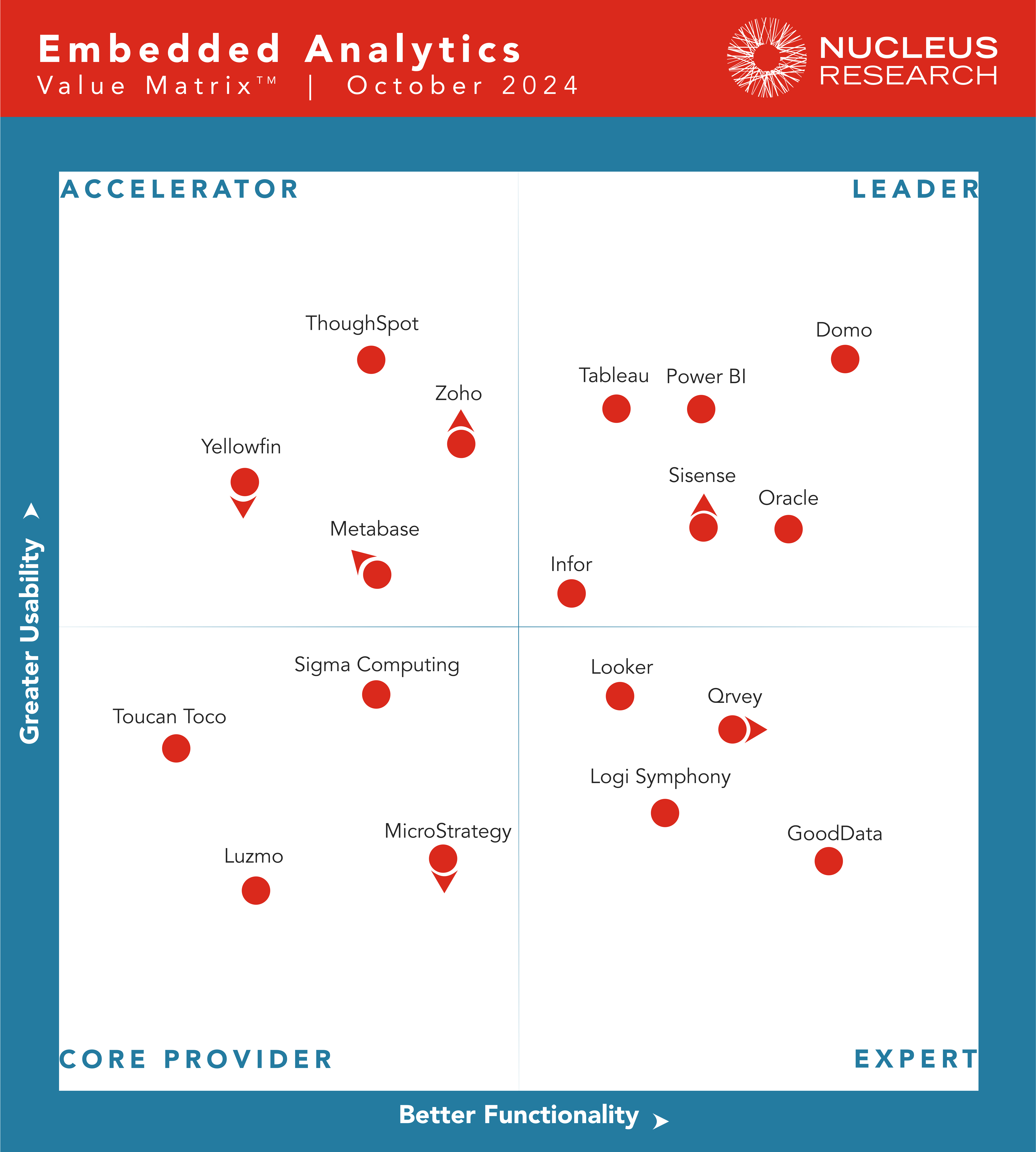Influential analyst firm Nucleus Research has once again name Oracle Analytics a leader in embedded analytics. In its analysis of the market, Nucleus Research analyst Alexander Wurm wrote: “Oracle Analytics maintains its strength in embedding options, offering low-code solutions with embed URLs, integrations with Oracle APEX and Oracle Visual Builder, and highly customizable embeddings using the Analytics JavaScript Framework for experienced developers.”
Oracle Analytics scored as a Leader and fared strongly in this Nucleus Value Matrix with a solid, balanced performance for both Functionality & Usability.

Embedded analytics within other experiences is of increasing importance as organization strive to broaden the impact of analysis for more people, in more operational roles. At Oracle we know that when data, analytics and AI are closer to the needs of a specific role and the processes, tasks, or decisions it comprises, these capabilities become part of the everyday cadence of work. When that happens, their usage becomes routine and the benefits repeatable, improving many operational and tactical decisions day in, day out. Much like in sports where it’s been shown that marginal gains can lead to monumental impacts, this is a route to getting real business outcomes from data.
The Nucleus report calls out that “Administrative and operational capabilities continue to be a strong point for Oracle Analytics, including embedded authoring features, developer customization hooks, and Git source control support for typical development lifecycles.” Why is this crucial? Because custom built apps must be governed and operated for the life cycle of the embedded analytics created. Oracle Analytics understands that and provides strong capabilities to aid deployment and usage.
Oracle Analytics’ approach is founded in the understanding that it’s not just hardcore developers who aim to build embedded analytical applications. Oracle supports composable assembly through the self-service capabilities of Oracle Analytics Cloud (OAC) in combination with Oracle Visual Builder and OCI AI Cloud Services.
Oracle Visual Builder lets citizen developers create and deploy web, mobile, and progressive web interfaces using a no-code toolkit. With Oracle, a composable data and analytics application can span across the entire D&A value chain. For example, it might use:
- OCI Object Storage
- Oracle Autonomous Database
- OCI AI Vision Service
- Oracle Analytics Cloud
- Visual Builder, which offers single sign-on access leveraging the users and roles defined in Oracle Cloud Applications.
With these services communicating via REST APIs.
Also, the Oracle APEX low-code tool set is used to develop and deploy web applications on Oracle databases and is integrated with Oracle Analytics. APEX provides a web-based integrated development environment (IDE) that uses wizards, drag-and-drop layout, and property editors to build applications and pages. APEX is a fully –supported no-cost feature of the Oracle Database. Oh and by the way, APEX is reportedly the world’s most widely used low-code community – with a massive talent pool of experience to call on when embedding data intensive apps.
For a fantastic example of how Oracle Analytics Cloud works with APEX today, see my colleague Mike Durran’s blog, Ten Reasons to Use Oracle Analytics with Apex to Build Your Applications.
Click here to read the Nucleus Research report, Embedded Analytics Technology Value Matrix 2024, and share your comments and questions in the Oracle Analytics Community.
